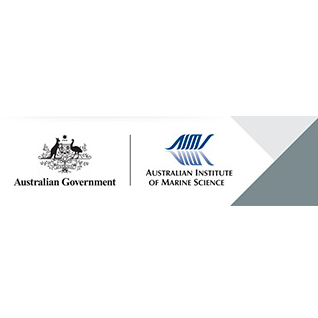Brief description
The data provided here are from a number of sea water temperature monitoring programs conducted in tropical and subtropical coral reefs environments around Australia. Data are available from approximately 80 GBR sites, 16 Coral Sea sites, 7 sites in North West Western Australia (WA), 8 Queensland regional ports, 13 sites in the Solitary Islands, 4 sites in PNG and 10 sites in the Cocos (Keeling) Islands. Data are obtained from in-situ data loggers deployed on the reef. Temperature instruments sample water temperatures every 5-10 minutes (typically) and are exchanged and downloaded approximately every 12 months. Temperature loggers on the reef-flat are generally placed just below Lowest Astronomical Tide level. Reef-slope (or where specified as Upper reef-slope) generally refers to depths 5 - 9 m while Deep reef-slope refers to depths of ~20 m. Reefs are under threat from climate change. Elevated sea temperature is a major stress to reefs, capable of causing widespread coral bleaching and mortality. Small excursions of temperature outside normal summer levels can cause stress and bleaching in corals, especially sensitive species. Temperature data from this program are used to correlate with bleaching events and derive local bleaching thresholds. Data are also used in a wide variety of other marine research programs, including fisheries, balast water, turtles, sea birds, seagrass, coral disease, oceanography, process studies, validation of proxy climate records etc. Download via the AODN Portal is currently unavailable, access through programming links below or the AIMS Time Series Explorer - https://apps.aims.gov.au/ts-explorer/Lineage
Maintenance and Update Frequency: irregularNotes
CreditBainbridge, Scott, Mr (AIMS)
Benthuysen, Jessica Dr. (AIMS)
Modified: 23 06 2025
text: westlimit=136.0; southlimit=-33.0; eastlimit=162.0; northlimit=-3.0
text: westlimit=92.0; southlimit=-35.44587496642698; eastlimit=134.26171660423282; northlimit=-8.0
User Contributed Tags
Login to tag this record with meaningful keywords to make it easier to discover
Article and Climatology Dashboard (see map on) Drivers of Bleaching on the Great Barrier Reef - Compilation of temperature data from 2015, 2016 2017
uri :
https://eatlas.org.au/gbr/nesp-twq-4-2-temperature-data-2015-17![]()
Thesis: Berkelmans RWC (2001) Bleaching, upper thermal limits and temperature adaptation in reef coral. Thesis. James Cook University Marine Biology. 179 p.
uri :
https://researchonline.jcu.edu.au/27175/1/27175_Berkelmans_2001_thesis.pdf![]()
Berkelmans RWC, Weeks SJ and Steinberg CR (2010) Upwelling linked to warm summers and bleaching on the Great Barrier Reef. Limnology and Oceanography 55: 2634-2644.
doi :
https://doi.org/10.4319/lo.2010.55.6.2634![]()
Ray Berkelmans. (2002). Time-integrated thermal bleaching thresholds of reefs and their variation on the Great Barrier Reef. Marine Ecology Progress Series, 229, 73–82.
doi :
https://doi.org/10.3354/meps229073![]()
Current QC method - applies to all current data
Data access through the Time Series Explorer
uri :
https://apps.aims.gov.au/ts-explorer/![]()
Time-integrated thermal bleaching thresholds of reefs and their variation on the Great Barrier Reef: Berkelmans RWC (2002) Time-integrated thermal bleaching thresholds of reefs and their variation on the Great Barrier Reef. Marine Ecology Progress Series 229: 73-82.
local : articleId=5600
Temperature Loggers Climatology for the GBR region (NESP TWQ 4.2, AIMS)
uri :
https://apps.aims.gov.au/metadata/view/75c9c4a9-f37f-45a6-9532-053506b43bd9![]()
Data access via Programming API
uri :
https://open-aims.github.io/data-platform/![]()
Data access using R
uri :
https://docs.ropensci.org/dataaimsr/![]()
Temperature Logger Deployments Data Download [Zip folder size: < 200 KB]
uri :
https://apps.aims.gov.au/data/temperature-loggers/temp-logger-deployments.zip![]()
Temperature Logger Data Download [zip folder size: > 1 GB]
uri :
https://apps.aims.gov.au/data/temperature-loggers/temp-logger-data.zip![]()
Snapshot - March 2019 - Old Quality Control process
uri :
https://api.aims.gov.au/data-v2.0/38d62b3f-b0a3-49ab-8ecb-4497508f0329/files/snapshot-march-2019.zip![]()
Old QC method - applies to data downloaded before March 2019
- global : 4a12a8c0-c573-11dc-b99b-00008a07204e


